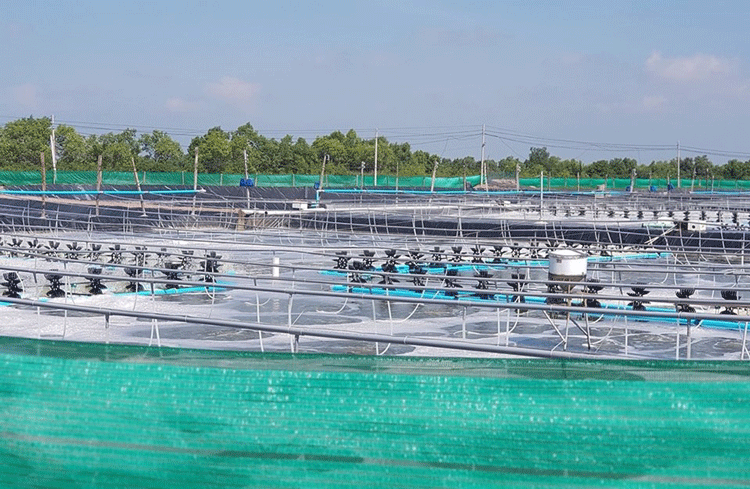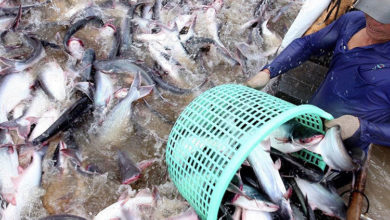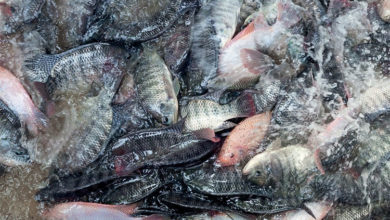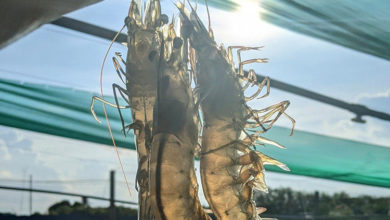AI revolutionizes shrimp farming in Vietnam
AI is increasingly taking on a vital role in Vietnam's shrimp farming industry, streamlining tasks from water quality management to automated equipment operations.
Smart water monitoring with AI
At a recent event held by the Department of Science and Technology of Ba Ria – Vung Tau Province, institutions including Ho Chi Minh City University of Industry and FPT BTEC introduced “Green AIoT,” an AI-powered solution for monitoring and optimizing shrimp pond environments.

Green AIoT relies on a network of IoT sensors to constantly collect real-time data on critical water parameters such as pH, salinity, dissolved oxygen, temperature, and alkalinity. These factors directly affect shrimp physiology, molting cycles, metabolism, and disease risk.
According to Vu Phan Minh Hai, project representative, the AI system can detect anomalies and automatically activate corrective devices, such as ultra-fine bubble oxygen generators (UFB), to maintain optimal water conditions. The system also uses historical data to forecast potential risks and suggest preemptive measures. Autonomous Surface Vessels (ASVs) further support the system by enabling AI to gather and analyze data across various pond locations for more accurate insights.
“Green AIoT is more than just a tech solution, it represents the future of smart aquaculture, where AI-driven intervention enhances productivity, mitigates risks, and promotes sustainable seafood practices,” Hai said.
High-tech aquaculture on the rise
According to the provincial Department of Agriculture and Environment, 527 local farms across crop cultivation, livestock, and aquaculture now use advanced technologies. Innovations include greenhouse systems, automated feeding, climate sensors, waste treatment via probiotics, and data-driven farm management.
Modern aquaculture systems feature enclosed water treatment loops, ensuring minimal environmental impact. Shrimp are mainly farmed in lined, circular tanks with roof covers, at densities of 250 – 500 shrimp per square meter, achieving yields of 30–50 tons per hectare per cycle across 3 – 4 cycles annually.
At Phan Duc Dat’s 21-hectare shrimp farm in Phuoc Hoi commune, Long Dat district, shrimp are raised under the CPF Combine model. His setup includes 21 farming ponds and 20 auxiliary water treatment ponds to maintain a closed-loop environment, enabling proactive disease detection and response.
To ensure water quality, Dat has installed modern pH monitors, aerators, and paddle wheels. Water is filtered through sedimentation ponds and renewed daily to stimulate shrimp growth and support consistent environmental conditions.
In response to unpredictable weather patterns, intense sun followed by sudden rain, Dat uses greenhouse roofs and raises pond water levels to 1.5 meters to stabilize temperatures. He also employs Vibot, a microbial technology that forms a brown “biofilm” on the water surface, shielding shrimp from UV radiation and extreme heat.
Vibot uses two Bacillus strains (Bacillus subtilis and Bacillus lateosporus) to suppress harmful bacteria, including those causing White Feces Disease (TDP), and to slow algae overgrowth and decomposition.
Thanks to this method, Dat has seen lower disease rates, more stable pond conditions, reduced antibiotic and supplement usage, and increased shrimp appetite and yields. “I piloted Vibot in seven ponds over 5,000 square meters and just harvested 27 tons of shrimp, each weighing around 25 shrimp per kilogram, over 5 tons more than previous cycles,” he shared.
VFM






